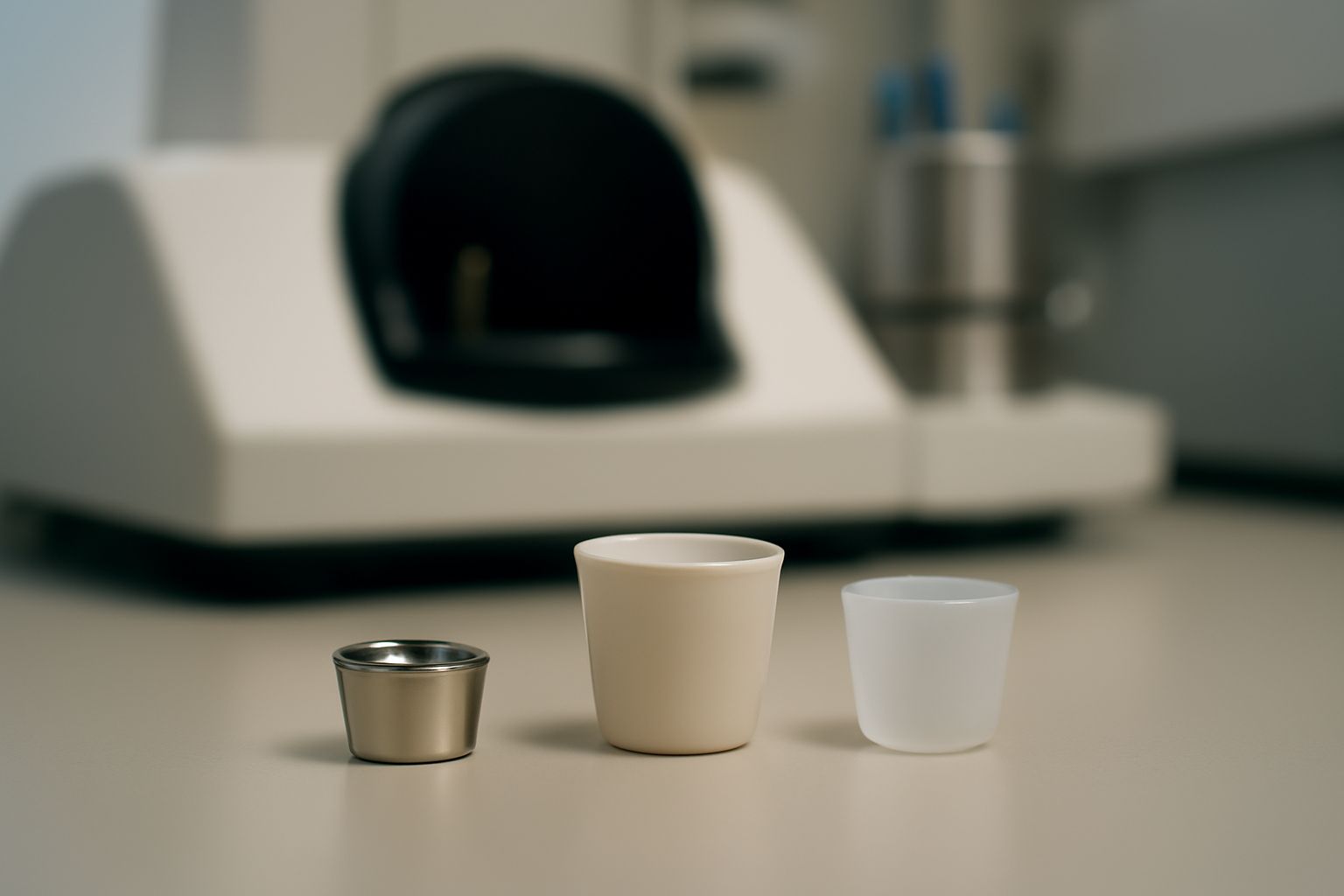Your cart is empty.
shop now
Your cart is empty.
shop now
Labs rely on precise test results for research and quality control. Choosing the wrong crucible leads to errors and waste during high-temperature analysis.
Selecting crucibles with the right material, size, temperature rating, and tolerance is necessary to achieve reliable and accurate results in high-temperature analysis.

I have made many decisions about crucibles in my own lab work. Understanding every technical detail—especially material strength, shape, and instrument fit—has saved my time and improved my testing confidence. In this guide, I share what to check and why it matters before you decide on any crucible for advanced thermal analysis.
Poor material choice in crucibles leads to melting, cracking, or contamination at high testing temperatures. This is a common reason for failed experiments and lost samples.
Platinum, alumina, and high-purity silica are the best materials for high-temperature crucibles due to their stability, non-reactivity, and resistance to thermal shock.
In my daily lab experience, platinum holds up best for repeated use at the highest temperatures, even above 1500°C. Alumina resists most chemicals and has long service life, so I use it for both routine and demanding tests. High-purity silica is good for mid-range tests and cases needing clear chemical backgrounds. Here’s a table comparing these common materials:
| Material | Max Operating Temp (°C) | Chemical Reactivity | Durability | Main Laboratory Use |
|---|---|---|---|---|
| Platinum | 1600 | Very Low | Very High | TGA/DSC, acids, specialty metals |
| Alumina | 1650 | Low | High | Routine analysis, polymer, ceramic |
| High-Purity Silica | 1100 | Very Low | Medium | Organic/volatile sample analysis |
The right material prevents contamination of your test, keeps the pan stable, and assures accurate readings. Source: ScienceDirect
Testing above recommended limits weakens crucibles and causes sample loss or equipment risk. Overheating even by a few degrees can create major problems in lab studies.
Maximum temperature limits for high-temperature crucibles depend on material: platinum (up to 1600°C), alumina (up to 1650°C), and high-purity silica (up to 1100°C).
I always check both the operating and maximum safe limits listed by the manufacturer before I order. Many labs use platinum for extreme environments. Some choose alumina for strong but less costly pans that still go over 1500°C. Silica is enough for most organic sample runs below 1100°C. Here is a quick comparison of safe limits:
| Crucible Material | Continuous Use Temp (°C) | Max Pulse Temp (°C) | Best Application |
|---|---|---|---|
| Platinum | 1500 | 1600 | High-precision, repeated cycles |
| Alumina | 1600 | 1650 | General high-temp tests |
| Silica | 1000 | 1100 | Moderate/volatile sample |
Lab safety and long-term accuracy depend on always following these limits. Reference: AZoM Alumina Crucibles
Errors in mass or temperature readings usually come from pan contamination or flawed crucible design. Labs with poor accuracy often have mismatched or damaged crucibles.
Use clean, undamaged, and properly sized crucibles made of the right material to minimize errors and ensure optimal measurement accuracy.
I always use clean pans and inspect every crucible for cracks before each test. Even small changes due to thermal stress can shift the weight or affect how heat moves through the pan. Careful calibration and cleaning routines are a must in my lab to avoid drift in baseline data. Here is a checklist of best practices:
| Practice | Why Important | Action | Extra Reference |
|---|---|---|---|
| Regular cleaning | Removes contaminants | Wash after each run | Lab Washer |
| Inspect for damage | Prevents leaks and cracks | Visual and tactile check | Lab SOP Manual |
| Calibrate with reference mass | Improves accuracy | Run calibration before series | Calibration |
| Select correct size | Reduces sample loss | Compare to protocol/spec | Instrument datasheet |
Proper care and correct choices keep my results as accurate as possible at every step.
Inaccurate crucible dimensions can make pans jam in instruments or cause repeat-data errors, wasting both time and samples.
Crucibles for advanced labs often require tolerances as tight as ±0.01mm to guarantee compatibility and precise measurement in TGA, DSC, or DTA equipment.
I always check with suppliers to confirm dimensional specs before ordering. A tight fit ensures even heating, avoids loss of material, and matches the design of sensitive thermal devices. Most high-end instrument brands publish required dimensions for each accessory. Here’s what key dimension factors look like:
| Parameter | Typical Tolerance | Effect of Error | Data Source |
|---|---|---|---|
| Outer diameter | ±0.01mm | Misfit, instrument jamming | Engineering Tolerance |
| Wall thickness | ±0.005mm | Heat conduction error | Supplier technical specs |
| Height/depth | ±0.01mm | Variations in sample volume | Instrument manual |
| Lid fitting | Tight (no visible gap) | Sample leakage or vapor loss | Manufacturer’s guide |
Meeting tight dimension standards helps maintain accurate readings and reliable operations during repeated use. Reference: TA Instruments Consumables
The best high-temperature crucibles balance superior material, precise dimension, and careful use, ensuring stable and accurate results in every advanced thermal analysis.
Contact REDTHERMO Technical SupportTechnical support email: